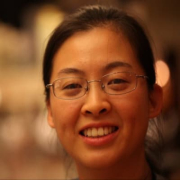

Symantec Endpoint Security and Deep Instinct Prevention Platform both compete in the endpoint protection category. Symantec Endpoint Security is considered easier to deploy and offers better customer service, while Deep Instinct Prevention Platform is noted for its advanced features and overall value.
Features: Symantec Endpoint Security provides comprehensive malware protection, strong threat intelligence capabilities, and centralized management. Deep Instinct Prevention Platform leverages deep learning to predict and prevent unknown threats with high accuracy. Users value the advanced threat detection and lightweight nature of Deep Instinct’s solutions. Symantec offers a broader suite of traditional security features, whereas Deep Instinct is innovative in its threat prevention technology.
Room for Improvement: Symantec Endpoint Security users mention the need for an updated interface, better support for macOS, and reduced resource consumption. Deep Instinct Prevention Platform users suggest improvements in reporting features, enhanced integrations with other security tools, and smoother management enhancements.
Ease of Deployment and Customer Service: Symantec Endpoint Security is recognized for its straightforward and quick deployment process with detailed documentation and responsive customer service. Deep Instinct Prevention Platform has a more complex setup, balanced by responsive support teams who guide through deployment and issue resolution.
Pricing and ROI: Symantec Endpoint Security is generally perceived as cost-effective with a competitive pricing model that delivers strong ROI by reducing threat incidences. Deep Instinct Prevention Platform, although more expensive, justifies its higher costs by offering unprecedented threat prevention efficacy and reduced downtime from cyber incidents.
Symantec Endpoint Security filled gaps in our toolset, particularly with the ability to control network firewall on hosts remotely, which was greatly appreciated.
Technical support from Deep Instinct Prevention Platform is fantastic.
In some cases, it rates as high as ten out of ten, while in others, it can be as low as eight.
There is no support in the German language, which is a problem for many public tenders.
Symantec Endpoint Security is quite scalable, and it is very important for large clients.
The scalability of the servers is good, as it requires computational powers.
Previously, we used to have multiple servers such as GUP servers and numerous servers for pushing updates, but we reduced it and transitioned almost 30,000 devices to CrowdStrike, which was easy to manage.
I have encountered issues where I had to uninstall and reinstall the product on end users' computers to view the logs again.
I would like to see improvements in the scanning part of the solution, specifically to enhance the CPU and hard disk usage during scanning and updates to prevent disruption during work hours.
We wanted to add multiple hashes because of numerous new alerts coming, but we could only add them one by one, which is a considerable disadvantage in Symantec.
It is cumbersome to use, particularly in handling firewall management.
The licensing is very competitively priced, better than all other solutions.
It seems to be half the cost or more affordable than other solutions.
Symantec Endpoint Protection and Symantec Endpoint Security Enterprise are quite affordable, with Symantec Endpoint Security Complete costing about four times the Endpoint Protection price, still comparable to other EDR products.
The pricing is very low compared to other companies like SentinelOne and others.
A valuable feature of Symantec Endpoint Security is the ability to remotely isolate a computer from the network if it's compromised, either physically or digitally.
What I appreciate most about Symantec Endpoint Security is that it's easy to manage compared to other tools I have worked with, such as minimal endpoint security, McAfee, and CrowdStrike.
One important feature is the EDR function, necessary for many public customers due to upcoming laws in Germany, which is available through Symantec Endpoint Security Complete.
| Product | Market Share (%) |
|---|---|
| Symantec Endpoint Security | 3.6% |
| Deep Instinct Prevention Platform | 0.7% |
| Other | 95.7% |


| Company Size | Count |
|---|---|
| Small Business | 10 |
| Midsize Enterprise | 4 |
| Large Enterprise | 5 |
| Company Size | Count |
|---|---|
| Small Business | 69 |
| Midsize Enterprise | 32 |
| Large Enterprise | 62 |
Deep Instinct PREVENTS >99% of UNKNOWN threats like ransomware and zero-days before they land inside your environment – not after. With both an agentless and agent-based approach, we ensure file-based and fileless attacks are prevented. To achieve this, Deep Instinct is pioneering the use of deep learning AI to prevent threats in <20ms, without requiring calls to the cloud for threat intelligence. Our ability to scale to the needs of the enterprise is unprecedented as is our delivery of the industry’s lowest false positive rate of <0.1%.
The Deep Instinct Prevention Platform combines industry-leading static analysis based on the only deep learning framework dedicated to cybersecurity and includes two solutions:
To learn more, visit: https://www.deepinstinct.com.
Symantec Endpoint Security is a robust and reliable product that provides complete protection against viruses, malware, Trojans, and malicious files. It offers application and device control, ease of use in deploying and updating, a central control console, stability, scalability, auto-discovery capabilities, patch management, endpoint detection and response capabilities, intrusion detection module.
The Symantec Global Intelligence Network (GIN) provides threat intelligence and detection across endpoints, email, and web traffic. It has helped organizations reduce downtime, increase productivity, and improve security posture. Symantec Endpoint Security is easy to use, has a flexible administration, and offers more value than expected.
We monitor all Endpoint Protection Platform (EPP) reviews to prevent fraudulent reviews and keep review quality high. We do not post reviews by company employees or direct competitors. We validate each review for authenticity via cross-reference with LinkedIn, and personal follow-up with the reviewer when necessary.